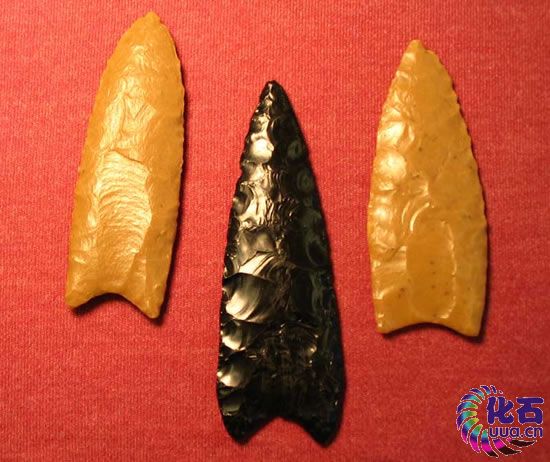湖泊沉积物引来争议:是否彗星造成冰期灾难?
By 苏剑林 | 2009-08-07 | 20485位读者 |笔者:翻译完这篇文章,感觉可以用一个字来形容:累!的确,这篇文章的不少句子都让人很模糊,我也只是意译+请教+google出来的,有任何的错误欢迎指出!翻译过程中,不断地使用了词典、Google,加上向人请教,才勉强完成了。 冰期、史前文明、灭绝、天体撞击,这些被谈论得越来越多了,究竟真相如何呢?又或者会不会发生在我们的将来呢?
湖泊沉积物带来争议:是否彗星引起冰期灾难?
“也许是克洛维斯人(Clovis people)百年来的过度狩猎,而非一次毁灭性的撞击,使得北美猛犸和其他巨型动物走向灭绝。”研究人员说。
威斯康星州大学麦迪逊分校的古生态学家Jacquelyn Gill说,理清古代湖泊沉积物地层后,她的团队并没有发现支持“彗星引起冰期导致生物灭绝”的证据。
“没有自然迹象显示这是一起撞击事件,”Gill表示,周二会在这里举行美国生态学会会议,“如果这是一起撞击事件...也不会像人们之前所说的那样有什么生态影响。”
2007年,理查德·费尔斯通(Richard Firestone)和他的同事在劳伦斯伯克利国家实验室发表的证据指出,1.29万年前的一颗彗星在美国五大湖附近撞击大气层,因而在北美引起了巨大的火灾。这些大火使一些生物迅速走向灭亡,其中包括非洲大陆的克洛维斯人文明和巨型动物,如猛犸、地懒以及另外的33个属的大型哺乳动物。
但是怀疑者指出了一些事实,即没有发现相关的撞击坑,以及欧洲大陆发生森林大火和人口迅速减少的证据是不充分的。除此之外,如果真的发生了这样的事情,小型哺乳动物与鸟类如何生存下来。(另外最近有研究对地球史上彗星撞击是多次灭绝事件原因的可能性提出了质疑。)
Gill和她的团队决定去寻找彗星撞击的线索,不过不是在陆地,而是在印第安那州和俄亥俄州的3个湖泊中,那里的古植物花粉和矿物的情况很稳定,可以追溯到几千年前的生态环境。她们搜寻了所有的能够与彗星撞击联系起来、可作为证据的矿样,包括灰烬、木炭、磁粒、硅酸盐颗粒以及钛、铬等元素。她并没有矿样中寻找被其他研究人员认为是撞击的标志的、诸如铱的稀土元素。
该团队并没有找到一个能够表明1.29万年前是一次单一的灾难事件的信息。而且在其中的一个湖发现,钛含量在减少的同时,碳含量竟然在增加。“这显然不是一次撞击事件。”Gill说。
Gill同时提出质疑,动物们的死亡时间与彗星撞击时间是否吻合?
一种被称为Sporormiella的真菌孢子,与大型动物的粪便有着密切联系的,它的数量是在1.46万年前便开始下降, 随后便迎来了冰期。其中一个湖显示,孢子记录在1.36万年前中断了,只有在过去的几个世纪里得到恢复,在牧场的地方上升。与此同时,大型动物所食的植物——如木岑(ash)、铁木和跳角树——的花粉开始增加,表明植物的生长不再被大型草食性动物所抑制。
Gill说,近来发现的更多的13,600至12,900年前的巨型动物化石,很可能是克洛维斯人以他们特有的长茅所毁灭的最后一个食利物种。
不过Firestone并没有因此而动摇,正如他说,“论点并没有补充什么,起到什么作用。”他表示,自己并不期望能够在湖中找到大量证据,因为磁矿物都会被锈蚀,悬浮在水中,不会集中在湖底。对他来说,数据仍然能够支持是外星因素造成毁灭的说法。“我想,争论不会有多大进展。”他说。
原文来自《科学美国人》
Lake Sediments Cast More Doubt That a Comet Caused Ice Age Extinctions
Overhunting by Clovis people over centuries, not a catastrophic impact, may have wiped out North American mammoths and other megafauna, researchers say
ALBUQUERQUE—After combing through layers of ancient lake sediments, paleoecologist Jacquelyn Gill of the University of Wisconsin–Madison says her team has found no evidence to support a controversial comet theory for an ice age extinction event.
"There's no physical trend to suggest that there was an impact event," Gill said Tuesday at the Ecological Society of America meeting held here this week. "If there was an impact event...it's not having the ecological effects [previously] suggested."
In 2007 Richard Firestone at the Lawrence Berkeley National Laboratory and colleagues published evidence suggesting that a comet exploding in the atmosphere 12,900 years ago near the Great Lakes set off massive fires in North America. These fires supposedly led to the rapid disappearance of the continent's Clovis culture as well as megafauna including mammoths, ground sloths and 33 other large mammal genera.
But skeptics point to the fact that no associated impact craters have been found, and evidence for continental forest fires and a rapid decline in human populations is sketchy. Besides, if such an episode had occurred, small mammals and birds somehow survived. (Another recent study has called into question the likelihood of comet impacts being responsible for more than one extinction event during Earth's history.)
Gill and her team decided to look for hints of the comet's impact not on land but in three lakes in Indiana and Ohio, where pollen and minerals have settled daily, creating an ecological record dating back millennia. She scoured core samples for evidence of ash, charcoal, magnetic grains, tiny silicate spheres, and elements such as titanium and chromium that could be associated with impact events. She did not look for rare earth minerals like iridium, which other researchers rely on as a signature of impacts.
The team failed to find a consistent signal that would indicate that a single catastrophe occurred around 12,900 years ago. At one lake, titanium actually decreased at the same time charcoal was increasing. "It's clearly not an impact event," Gill said.
Gill also questioned the view that animals died off right at the time of the proposed impact event.
Fungal spores called Sporormiella, associated with the dung of large mammals, actually begin to decline 14,600 years ago, soon after the end of the last ice age. The spores wink out of the record at one lake 13,600 years ago and only recover in the past few centuries with the rise in cattle grazing. At the same time, pollen from the plants that megafauna munched on—ash, ironwood and hop hornbeam—starts piling up, suggesting the plants' growth was no longer being kept in check by leaf-loving large mammals.
More recent megafauna fossils, dated between 13,600 and 12,900 years ago, were likely the last hangers-on as the Clovis people decimated species with their characteristic spears, Gill says.
But Firestone was not swayed by the new study, which he says "adds nothing to the argument." He says that he would not expect to find much evidence in lake sites because magnetic material would rust away, while the tiny spheres float and would not collect on the lake bottom. For him, the data still points toward an extraterrestrial impact. "As far as I'm concerned the debate is settled," he said.
转载到请包括本文地址:https://kexue.fm/archives/61
更详细的转载事宜请参考:《科学空间FAQ》
如果您还有什么疑惑或建议,欢迎在下方评论区继续讨论。
如果您觉得本文还不错,欢迎分享/打赏本文。打赏并非要从中获得收益,而是希望知道科学空间获得了多少读者的真心关注。当然,如果你无视它,也不会影响你的阅读。再次表示欢迎和感谢!
如果您需要引用本文,请参考:
苏剑林. (Aug. 07, 2009). 《湖泊沉积物引来争议:是否彗星造成冰期灾难? 》[Blog post]. Retrieved from https://kexue.fm/archives/61
@online{kexuefm-61,
title={湖泊沉积物引来争议:是否彗星造成冰期灾难?},
author={苏剑林},
year={2009},
month={Aug},
url={\url{https://kexue.fm/archives/61}},
}











最近评论